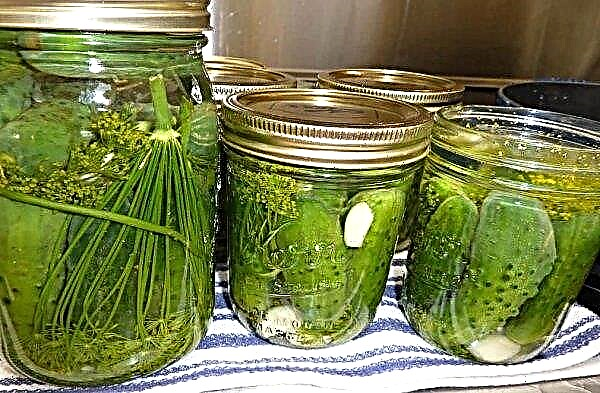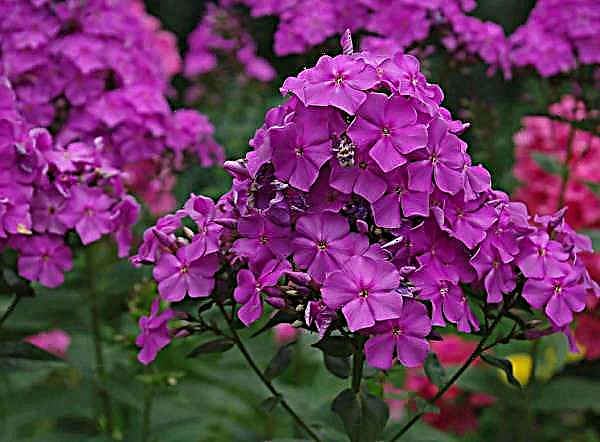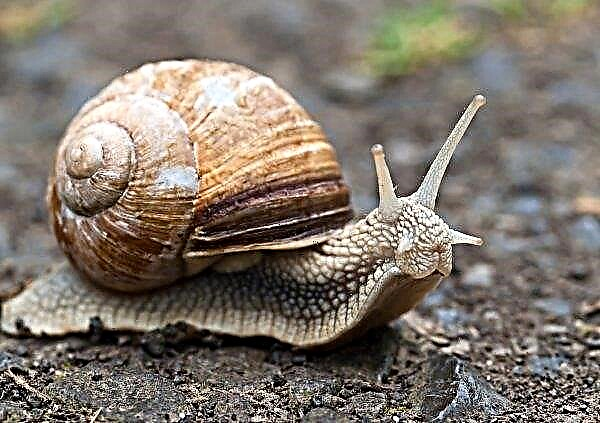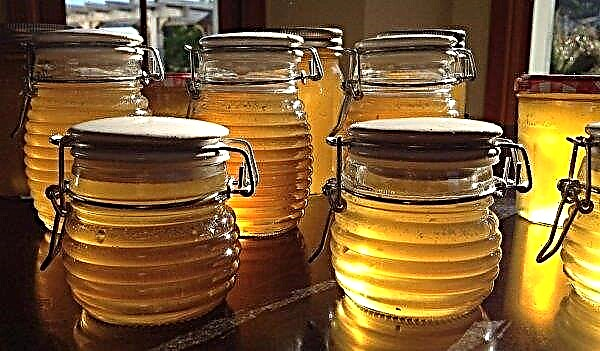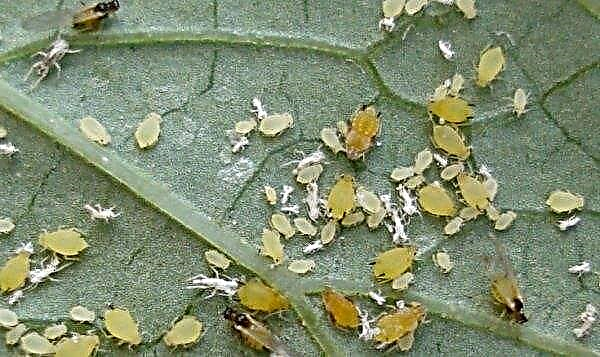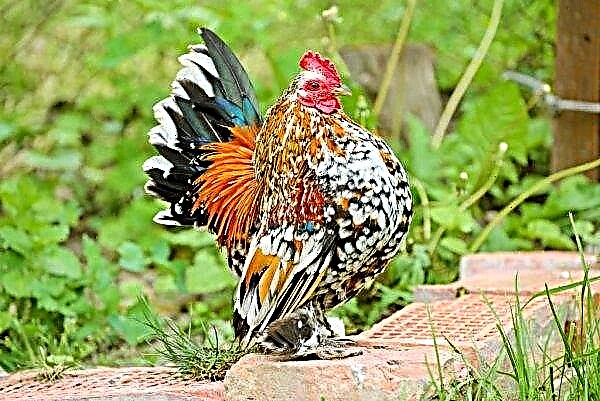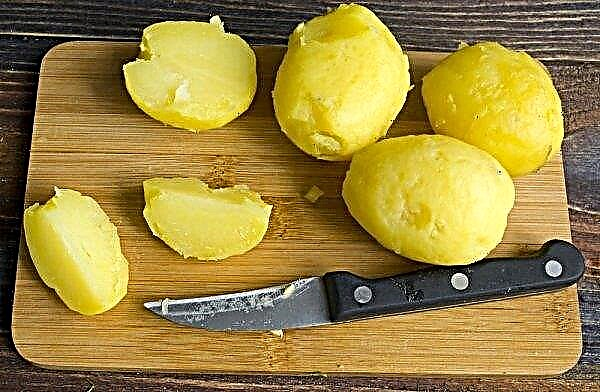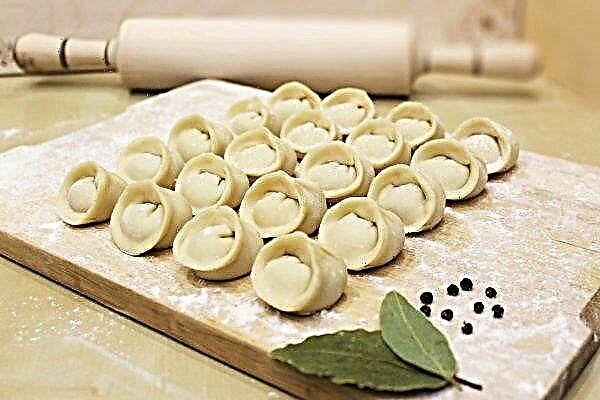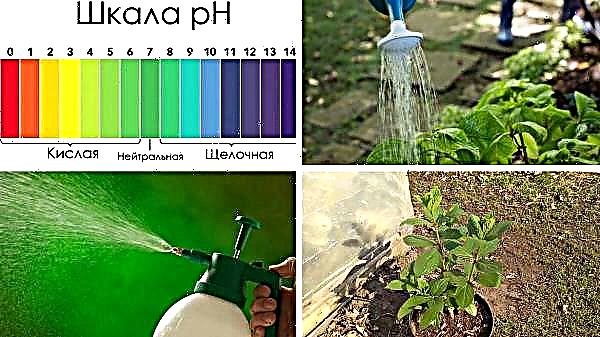Strawberry variety Ducat is common among gardeners who love the crop for early ripeness and good yield. About the characteristic features of the variety and the technology of its planting, read below.
History of Variety Breeding
Strawberry Ducat was obtained by crossing the Coral 100 and Gorella varieties in 1975. Botanists from the Polish Institute of Horticulture and Floriculture in Skinevishche were engaged in breeding culture.
Description and characteristics of strawberries Ducat
The plant belongs to the variety of medium early ripening, so the harvest is carried out from mid-June to early July. The culture tolerates frosts well and is able to withstand lowering soil temperatures to –8 ° C.
Did you know? Strawberry juice can whiten and strengthen tooth enamel, as well as freshen the breath, so the berries are included in the diet with thinning of enamel and bleeding gums.
The variety is characterized by good immunity against gray rot and other infectious diseases caused by high humidity, so the variety is often cultivated in regions with a harsh climate.
The plant is low, but powerful and spreading. It features a rapid growth of mustache, which contributes to the rapid reproduction. The flowers are bisexual, white. Leaf plates are large, indented at the edges, dark green.

Berries - large sizes, weighing up to 50 g, color red. The shape of the fruit is a cone with even walls, the tip is blunt. From the bush of Ducat, a crop of up to 2 kg is harvested. The pulp of the fruit has a pink-red hue, dense, does not have a white center. The taste is sweet, a slight acidity may be present.
Advantages and disadvantages of the variety
- Among the advantages of the variety Ducat are:
- excellent winter hardiness;
- immunity to fungal infections;
- unpretentiousness to the soil composition;
- high yields;
- excellent transportability.
The disadvantage of the culture is a weak immunity to powdery mildew and the invasion of the spider mite.

Features of planting strawberries
In order to grow a healthy plant that will bear fruit abundantly each year, you must follow the rules of agricultural technology. The choice of landing site and landing technology of Dukat are described below.
The timing
The further development depends on how long the strawberries are planted. For regions with a harsh climate, landings are carried out from May 20 to June 10. In areas with a southern and temperate climate, a plant should be planted in autumn, from September 1 to September 20.
Important! The culture survives well if planting is carried out in compliance with the temperature regime from + 15 ° С to + 25 ° С.
Seat selection
It is necessary to carefully approach the choice of the place of planting of Dukat, because the productivity and taste of berries depend on this.
The site should be located on the plain, because the slopes and lowlands will adversely affect the growth and development of the bush. On the slopes, the culture will remain unprotected in the winter, because on such a terrain snow is the first to leave, leaving strawberries without natural insulation. In the lowlands, cold air and humidity gather, which will provoke shredding and rotting of the berries.
 It is important to remember crop rotation and plant a crop at the place of onion, carrot, bean and parsley
It is important to remember crop rotation and plant a crop at the place of onion, carrot, bean and parsley
When choosing a landing site, wind blowing is also taken into account, it must be moderate, otherwise due to drafts there is a risk of infection with fungal spores, as well as freezing of plants in winter.
The development of the culture contributes to good lighting, thanks to which the berries will be sweeter. You should not plant near raspberry shrubs, as well as rose hips and hawthorn. The best neighbors for strawberries are corn, peas or beans.
Site preparation
Site preparation is carried out six months before landing. It is necessary to remove the area from the remains of plant debris and weed grass.
Dig the soil to a depth of 30 cm, applying fertilizer of 70 g of superphosphate, 5 kg of humus and 300 g of wood ash for every 1 m². After fertilizing, the site is leveled with a rake.

Direct landing
Ducat strawberry seedlings are purchased at a local nursery. Before planting in the soil, plant roots can be placed in a solution of growth stimulant from the drug "Kornevin" (1 g per 1 liter of water) for a period of 3-4 hours. Plants treated with Kornevin will be more resistant to frost and disease before planting.
Landing technology:
- Dig a hole 40 cm deep and 30 cm wide.
- Embed seedlings in the pit, making sure that the roots are straightened, not bent.
- Pour the soil into the hole so that the root neck is at the level of the soil.
- Gently ram the soil near the stem.
- Pour 1 liter of warm water.
- Cover the soil near the seedlings with straw to prevent further contact of the fruit with the soil.
 When planting a crop, it is necessary to observe the distance between rows of 40 cm and between bushes of 50 cm
When planting a crop, it is necessary to observe the distance between rows of 40 cm and between bushes of 50 cm
Plant care
Care for the culture of the variety in question starts after the snow melts, and ends in late autumn, when the first frosts begin. The care of the plant is timely watering, fertilizing and cultivating the soil.
Video: How to properly care for strawberries in spring, summer and autumn
Watering and feeding
Before flowering, the plant is watered once every 5-7 days, depending on the drying speed of the earthen coma. During ripening, the liquid is introduced only after collecting ripe berries, the frequency of watering does not change. Water for the procedure settles during the day, it must be warm, at least + 25 ° C. Under each bush make 500 ml of liquid.
Fertilizer is carried out 4 times per season by adding 500 ml of a liquid mixture for each bush:
- Before flowering, it is necessary to fertilize 30 g of potassium nitrate, 30 g of nitrophosphate and 10 l of water.
- During flowering, fertilizer is added from 200 g of chicken droppings and 10 l of water.
- After harvesting, it is necessary to feed the culture with a solution of 60 g of urea per 10 liters of water.
- At the end of the summer period or the beginning of autumn, it is necessary to feed the plant with a solution of 500 g of manure per 10 liters of water.

Tillage
After watering and rain, it is necessary to loosen the soil near the plant, which will enrich the rhizome with oxygen and prevent the formation of a dense crust on the ground.
Important! You can mulch the culture once every 14–20 days; peat, straw or sawdust is taken as a raw material for the procedure. The procedure is able to protect the fruits from pollution and suppuration with an excess of moisture.
Diseases and Pests
Often the culture is invaded by a spider mite. This small insect has small dimensions - up to 3 mm; its color is green. The plant settles on the lower leaves and feeds on the sap of the plant. The presence of a spider mite can be noticed by the presence of a large number of spider webs on strawberries. After time, the lower leaf plates begin to dry and die, which leads to a general weakening of the plant.

To deal with a spider mite, you need to comprehensively:
- Removing damaged leaves.
- Compliance with watering regime.
- Spraying with a soap-ash solution prepared from 300 g of wood ash, 100 ml of liquid soap and 10 l of water.
Less commonly, a strawberry tick attacks a culture. - a microscopic insect up to 2 mm in length, white. The pest eats the juice of leaves and stems. The tick is able to harm the flower ovaries, they dry out and do not bring a crop. A plant that has been invaded by a strawberry tick lags in development and ceases to bear fruit.

Strawberry mite control:
- Irrigation of infusion of onion husks prepared from 500 g of husk and 10 l of warm water, immediately before processing the plants, 100 g of soap are added to the solution.
- Spraying with the preparation “Karbofos” (90 g per 10 l of water).
Most often, the plant is affected by a fungal infection - powdery mildew.
Powdery mildew in the initial stages appears as a small web on the back of the leaf. Over time, the disease progresses, forming dense, round-shaped spots on the outside of the leaves, which have a fluffy surface and a viscous consistency.
Did you know? Strawberry is one of the few fruits that contain seeds not inside but outside, their number reaches 200.
Powdery mildew harms the entire plant. Flower ovaries drive out or produce a deformed crop that is not suitable for human consumption. If you do not fight the disease, the plant may die.
Powdery Mildew Control:
- Loosening the soil near the plant.
- Cleaning damaged leaf blades.
- Colloidal sulfur treatment (50 g per 10 l of water).

Harvesting and storage
To preserve the fruits of Ducat longer, they are harvested 2 days before maturity. Collection is carried out in dry, calm weather. When separating strawberries from the bush, you need to ensure that the berry remains with a tail. Harvested in wicker baskets or wooden boxes, the bottom of which must be lined with paper. Stack berries in 1-2 layers.
 The shelf life of ripe berries at a temperature of + 20 ° C and above is 24 hours. When placing strawberries in the refrigerator, the fruit preservation increases up to 4 days, subject to observing a temperature of + 2 ° С
The shelf life of ripe berries at a temperature of + 20 ° C and above is 24 hours. When placing strawberries in the refrigerator, the fruit preservation increases up to 4 days, subject to observing a temperature of + 2 ° С
Strawberries are a tasty and healthy berry that grows in almost every garden. Gardeners who want to acquire such a plant in the garden should pay attention to the Dukat variety, which is characterized by frost resistance and high productivity.

